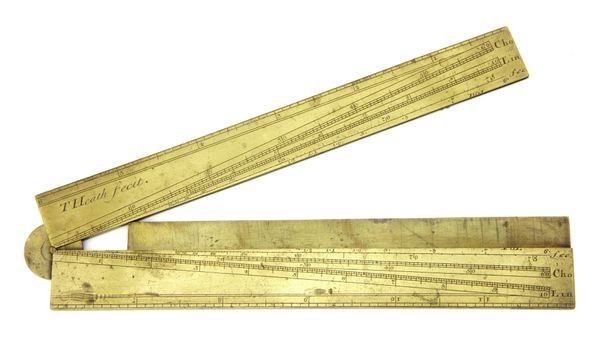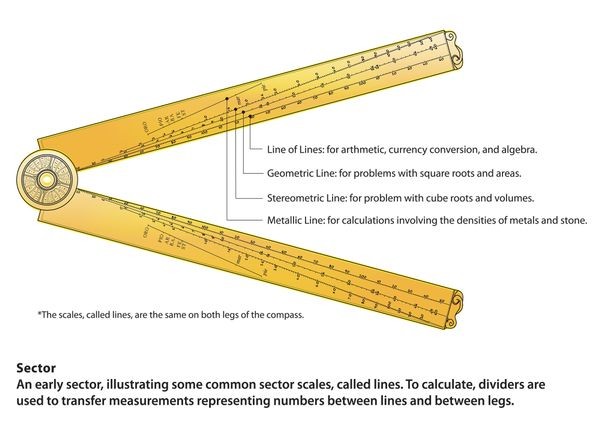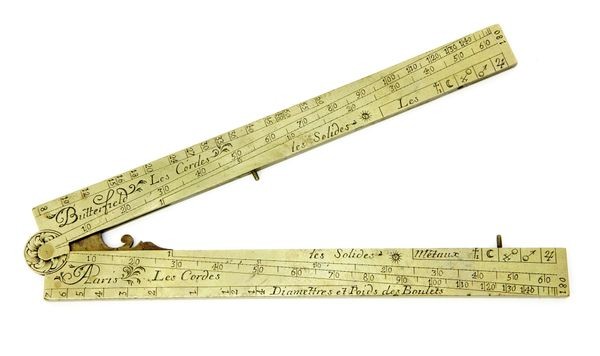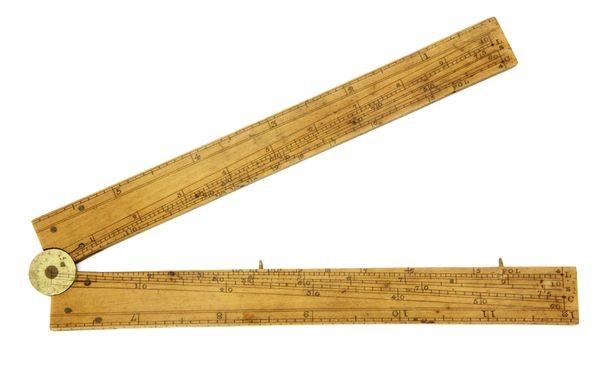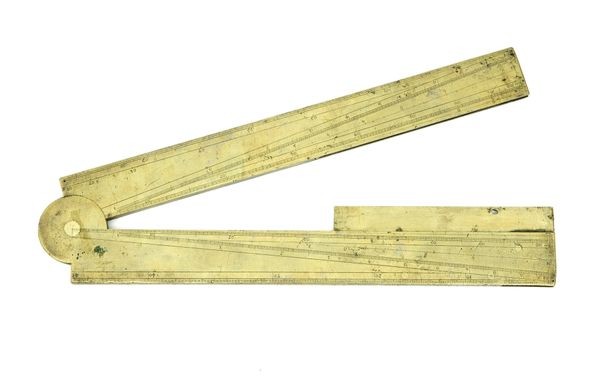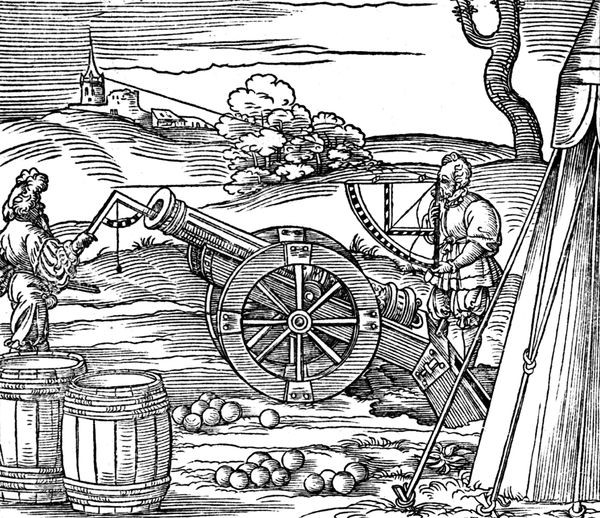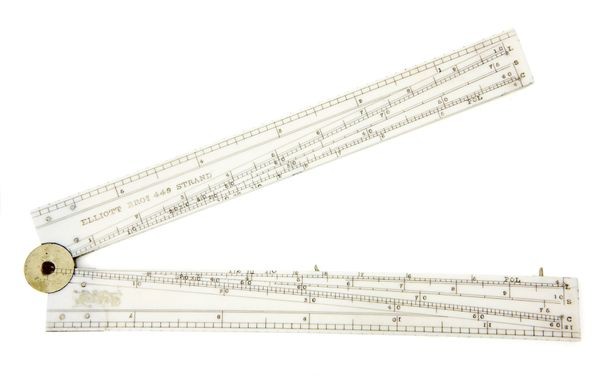Sectors
Sector
An English-style sector as described by Edmund Gunter in 1623.
Sectors
The compass-like sector, developed in the late 1500s, can perform a tremendous range of approximate computations, from basic arithmetic to calculating areas and volumes or converting currencies.
Much in demand for tasks like military fortifications, where quick answers mattered more than precision, sectors became commercial products: astronomer Galileo built and sold more than 100.
Woodcut from L'usage du compas de proportion
A late Renaissance French scholar works with mathematical instruments, including a sector (or “proportional compass”).
View Artifact DetailSector Diagram
An early sector, illustrating some common sector scales, called lines. To calculate, dividers are used to transfer measurements representing numbers between lines and between legs.
View Artifact DetailSector
An unusually large sector in the typical Continental European style, decorated with a floral pattern.
View Artifact DetailSector
An English-style sector, possibly intended for navigational calculations.
View Artifact DetailWoodcut from Vitruvius Teutsch
The earliest European mathematical instruments were used by the military. Here, Renaissance gunners use two types of quadrants.
View Artifact DetailSector
Founded circa 1804, Elliott Brothers built some of the earliest electronic computers in the 1950s.
View Artifact Detail